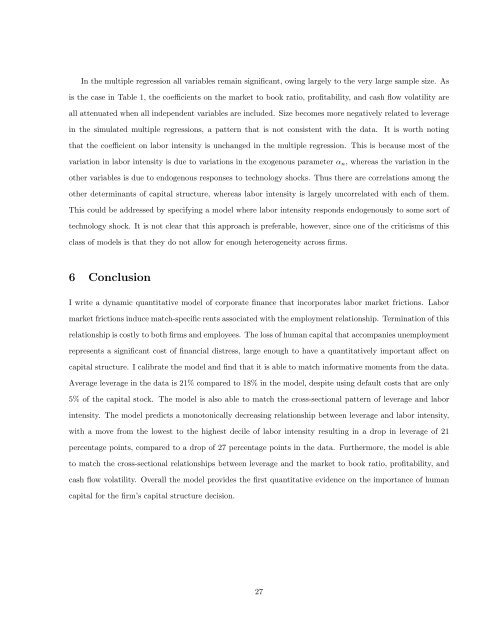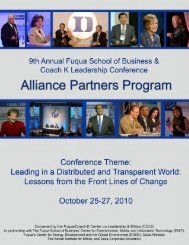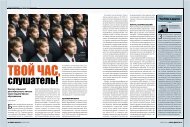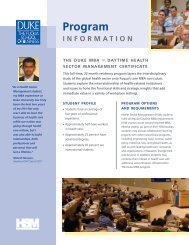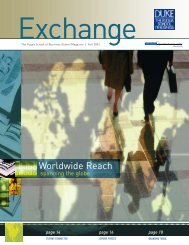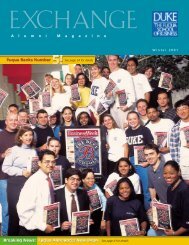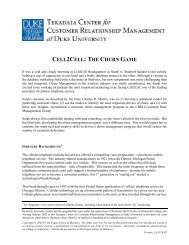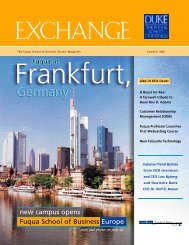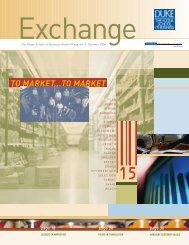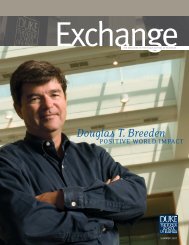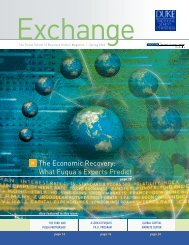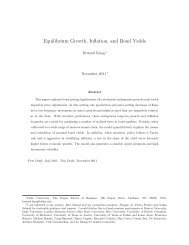A Structural Model of Human Capital and Leverage - Duke ...
A Structural Model of Human Capital and Leverage - Duke ...
A Structural Model of Human Capital and Leverage - Duke ...
You also want an ePaper? Increase the reach of your titles
YUMPU automatically turns print PDFs into web optimized ePapers that Google loves.
In the multiple regression all variables remain significant, owing largely to the very large sample size. As<br />
is the case in Table 1, the coefficients on the market to book ratio, pr<strong>of</strong>itability, <strong>and</strong> cash flow volatility are<br />
all attenuated when all independent variables are included. Size becomes more negatively related to leverage<br />
in the simulated multiple regressions, a pattern that is not consistent with the data. It is worth noting<br />
that the coefficient on labor intensity is unchanged in the multiple regression. This is because most <strong>of</strong> the<br />
variation in labor intensity is due to variations in the exogenous parameter αn, whereas the variation in the<br />
other variables is due to endogenous responses to technology shocks. Thus there are correlations among the<br />
other determinants <strong>of</strong> capital structure, whereas labor intensity is largely uncorrelated with each <strong>of</strong> them.<br />
This could be addressed by specifying a model where labor intensity responds endogenously to some sort <strong>of</strong><br />
technology shock. It is not clear that this approach is preferable, however, since one <strong>of</strong> the criticisms <strong>of</strong> this<br />
class <strong>of</strong> models is that they do not allow for enough heterogeneity across firms.<br />
6 Conclusion<br />
I write a dynamic quantitative model <strong>of</strong> corporate finance that incorporates labor market frictions. Labor<br />
market frictions induce match-specific rents associated with the employment relationship. Termination <strong>of</strong> this<br />
relationship is costly to both firms <strong>and</strong> employees. The loss <strong>of</strong> human capital that accompanies unemployment<br />
represents a significant cost <strong>of</strong> financial distress, large enough to have a quantitatively important affect on<br />
capital structure. I calibrate the model <strong>and</strong> find that it is able to match informative moments from the data.<br />
Average leverage in the data is 21% compared to 18% in the model, despite using default costs that are only<br />
5% <strong>of</strong> the capital stock. The model is also able to match the cross-sectional pattern <strong>of</strong> leverage <strong>and</strong> labor<br />
intensity. The model predicts a monotonically decreasing relationship between leverage <strong>and</strong> labor intensity,<br />
with a move from the lowest to the highest decile <strong>of</strong> labor intensity resulting in a drop in leverage <strong>of</strong> 21<br />
percentage points, compared to a drop <strong>of</strong> 27 percentage points in the data. Furthermore, the model is able<br />
to match the cross-sectional relationships between leverage <strong>and</strong> the market to book ratio, pr<strong>of</strong>itability, <strong>and</strong><br />
cash flow volatility. Overall the model provides the first quantitative evidence on the importance <strong>of</strong> human<br />
capital for the firm’s capital structure decision.<br />
27


